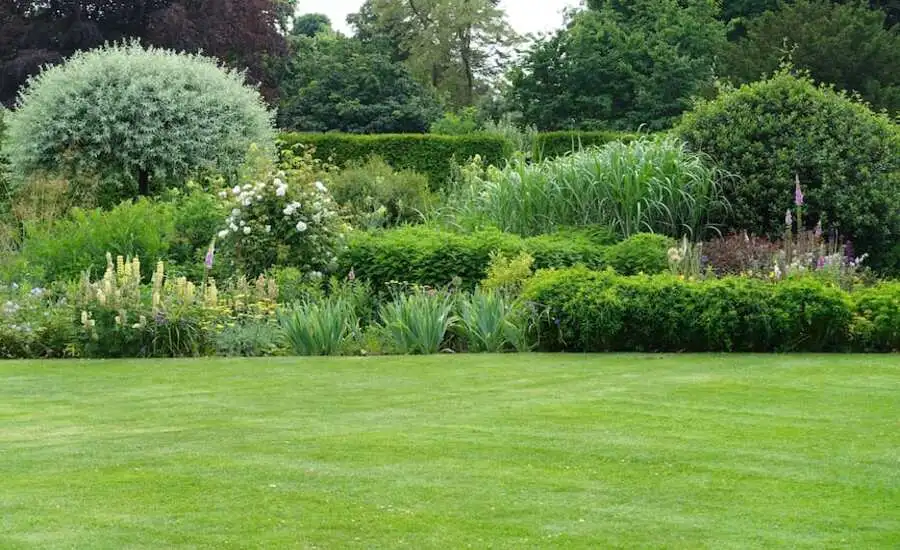A lush, green lawn is more than just a patch of grass—it’s an integral part of a home’s landscape that adds beauty and value. It becomes the backdrop to family gatherings, a playground for children, and a personal escape for relaxation. It’s no wonder many homeowners take pride in crafting the perfect lawn. While achieving a pristine lawn involves effort and dedication, focusing on lawn care in Maine or any other region requires understanding specific maintenance techniques that vary across climates and soil types.
To master the art of lawn care, one must balance general principles with regional specifics. From selecting the right grass type to adopting seasonal lawn care routines, it’s crucial to approach the task with both knowledge and adaptability. This comprehensive guide aims to help you unlock the secrets to maintaining a vibrant lawn all year round, incorporating tried-and-true methods and innovative solutions.
The Appeal of a Beautiful Lawn
The allure of a well-maintained lawn goes deeper than its visual appeal. A verdant lawn is a multi-functional space, enhancing the property’s aesthetic while facilitating various activities—from hosting summer barbecues to providing a peaceful setting for evening relaxation. Many homeowners invest time and resources to develop their lawns into inviting, lush environments that best express their style and enhance their living space. The drive to cultivate a picturesque lawn is both a creative endeavor and a rewarding challenge that offers substantial benefits.
Seasonal Lawn Care: Tailoring Your Efforts
Effective lawn care requires adapting your efforts to the changing seasons. Each season presents its own set of challenges and opportunities for lawn enhancement. For instance, as the snow melts, springtime marks a period for rejuvenation and repair; aerating the lawn and reseeding patchy areas helps jumpstart fresh growth. Maintaining a consistent watering schedule during summer is essential to combat high temperatures and drought. Understanding how to use water effectively can help conserve resources while keeping your lawn healthy. As fall approaches, prepare your grass to withstand the upcoming winter by mowing it at the right height and renewing the soil’s nutrients with suitable fertilizers.
Choosing the Right Grass Type
A foundational step in achieving an alluring lawn is choosing the right type of grass. The ideal grass variety for a lawn depends on local climate, soil conditions, and intended use. Cool-season grasses like Kentucky bluegrass and fescues flourish in northern, cooler temperatures than warm-season grasses like Bermuda or Zoysia, which thrive in southern heat. When selecting grass, consider the lawn’s sun exposure; some prefer full sunlight, while others can tolerate shade. Matching grass species to your specific landscape needs ensures a more vigorous lawn that encounters fewer issues over time, building the groundwork for a thriving green expanse.
Essential Lawn Maintenance Practices
The cornerstone of any healthy lawn lies in consistent and essential maintenance practices. Regular mowing is fundamental; cutting the grass too short can stress and weaken it while cutting it too long allows weeds to establish. Fertilization with a balance of nutrients encourages robust root development and helps grass maintain its green vibrancy. Additionally, soil aeration proves invaluable in preventing compaction—allowing roots to access air and nutrients more freely, and promoting healthy growth cycles. An understanding of meticulous maintenance routines upholds the lawn’s aesthetic integrity and health effectively.
Natural Solutions for Common Lawn Problems
Lawn problems such as pests and weeds frequently pose challenges, yet implementing natural solutions often turns out to be both eco-friendly and highly effective. Adopting organic lawn care methods mitigates the harsh impact of chemical alternatives. Introducing beneficial insects, like ladybirds, to control aphids or practicing techniques such as overseeding and applying corn gluten meal, a natural pre-emergent, combats weeds without causing adverse environmental effects. Implementing simple permissible measures ensures the availability of sustainable practices that preserve the natural balance in your lawn ecosystem.
The Role of Irrigation in Lawn Health
Achieving optimum lawns involves implementing a consistent and well-managed irrigation system. While water is indispensable for sustaining vibrant greenery, improper irrigation can lead to over or under-watering, negatively impacting lawn health. Intelligent irrigation systems present a valuable solution by automatically adjusting water usage based on real-time weather and soil conditions, conserving resources and money on utility bills. Strike an appropriate balance by applying one inch of water weekly to allow for deep soil penetration, fostering a resilient root system that supports lush lawn growth.
Smart Lawn Equipment for Efficient Care
Enhancing your lawn care efforts may involve integrating modern technology into your practices. Innovative equipment can streamline lawn upkeep, reducing labor intensity while significantly improving outcomes. Robotic mowers offer a seamless, hands-free mowing experience, freeing time and providing consistent cut quality. Soil sensors relay real-time feedback on moisture and nutrient levels, enabling precise applications of water and fertilizers, contributing to resource efficiency and healthier lawns. By embracing innovative equipment, homeowners can effortlessly maintain their lawns’ vibrancy, prioritizing effectiveness alongside sustainability.
Environmental Benefits of a Well-Maintained Lawn
A meticulously maintained lawn not only contributes to a home’s aesthetic but also extends to the environmental benefits it provides. Lawns act as natural filters, absorbing particulate matter and purifying the air, while the grass blades contribute to cooling surrounding air temperatures. Furthermore, lawns support biodiversity by offering habitats to myriad tiny organisms, thus energizing your garden’s ecosystem. With equally significant psychological benefits, the tranquil backdrop of a lush garden promotes outdoor living, positively affecting mental health. This holistic view presents the outdoor space as an eco-friendly asset, reinforcing the need for sustainable lawn maintenance practices. By focusing on these areas, homeowners can create and maintain a lawn that is beautiful, sustainable, and beneficial to the environment.
If you like this blog post, click here to more,









